Uncovering Adelaide’s “hostile” public architecture
Public spaces in Adelaide’s CBD are permeated by “defensive” or even “hostile” design elements that tread a fine line between protecting community assets and discouraging certain groups – especially the homeless – from using them.

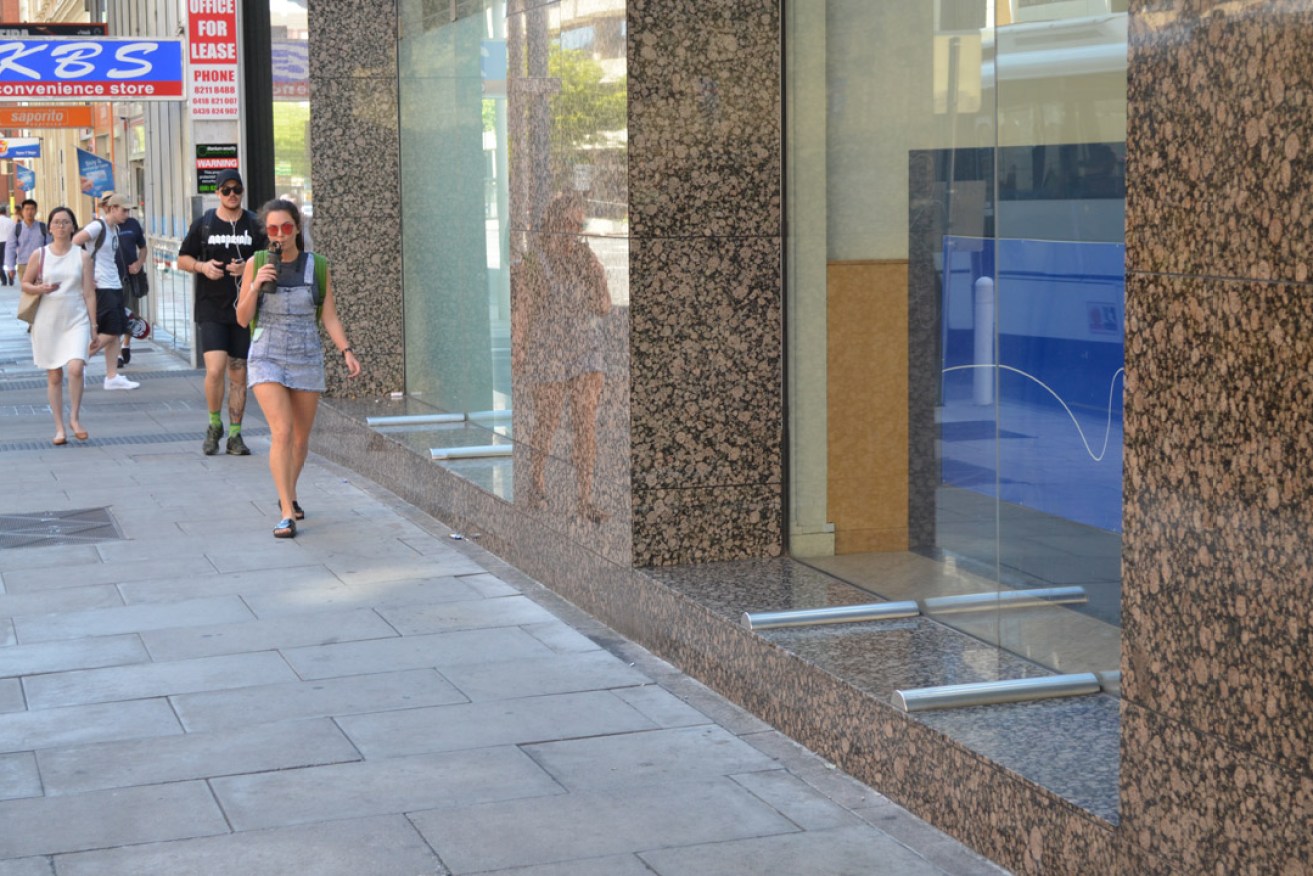
Metal lumps in front of a building on Currie Street prevent damage to the marble - but also prevent homeless people from sleeping there.
“Hostile” design has become a worldwide trend. Following a public outcry in 2015, “anti-homeless sprinklers” were removed from the front of an art centre in Perth’s CBD. “Anti-homeless spikes” in front of various buildings have been the cause of repeated controversies in the past several years in London.
In Adelaide, far more subtle design elements can deter homeless people from sleeping in public spaces.
They also serve other purposes, especially protecting public infrastructure from damage from skateboards.
Metal lugs on public seating, lumps of stainless steel installed in alcoves, and benches too thin or too short to sleep on, are all part of “the armoury of weapons against homeless occupation” in Adelaide’s CBD, according to Adelaide University’s associate professor of architecture and urban design Julian Worrall.
Worrall tells InDaily these design elements epitomise a fundamental tension about the purpose of public space.
“There’s a tension that exists … between being open and welcoming, and amenable, but at the same time not encouraging permanent occupation,” he says.
“I think that such measures are antagonistic to the core mission of public space, which is to be open to all.
“The essence of urban public space design is that it should be a space that’s open to all, that’s admitting to diversity [so that] young, old, rich and poor can share the spaces happily.
“There are those among us for whom the public realm is their world, and I think we’d do well to remember that.”
But in order for the public realm to remain open to everyone, it cannot be “appropriated [or] taken over by a specific individual or group”.
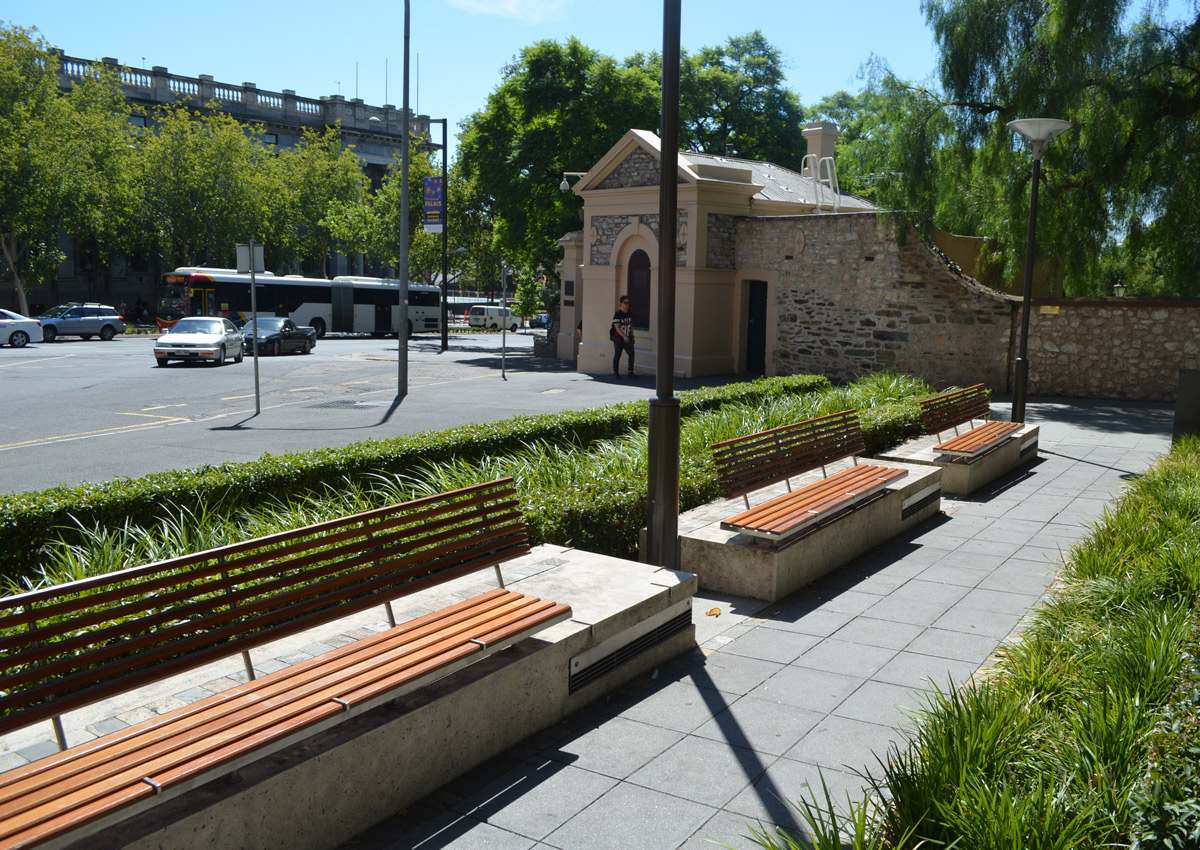
Metal lugs on public seating in front of Government House on North Terrace.
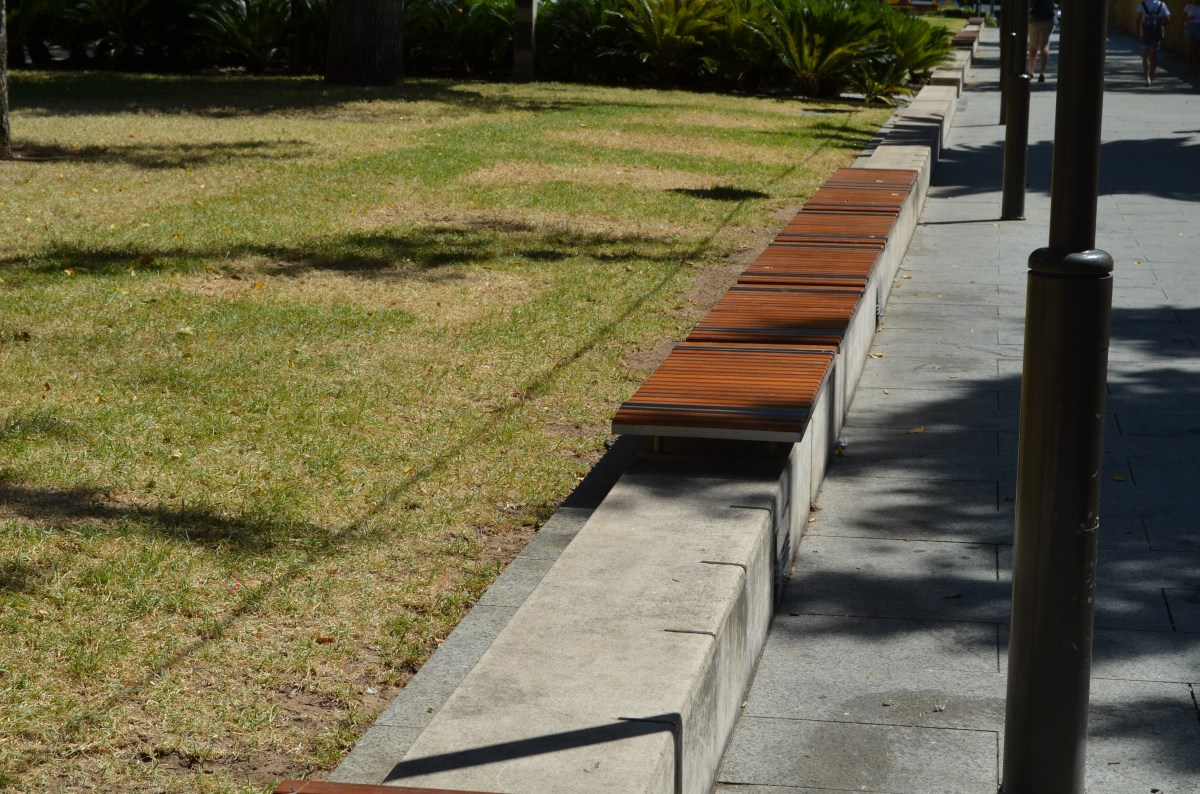
Metal lugs on public seating in front of Government House on North Terrace.
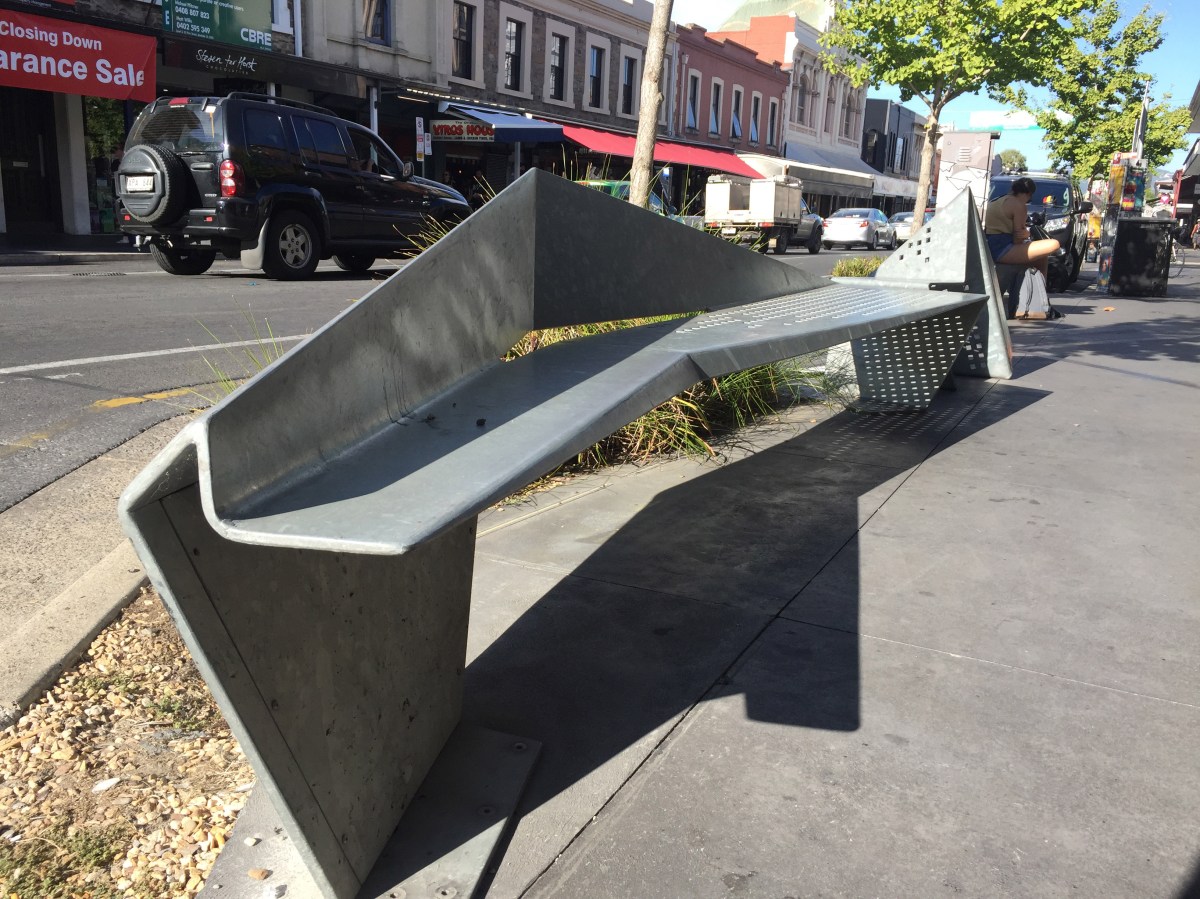
Benches on Rundle Street are thin and bent.
President of the South Australian Chapter of the Australian Institute of Landscape Architects Ben Willsmore tells InDaily it is important for certain types of public infrastructure to be protected from damage by using physical design elements.
He described metal lugs on public seating, for example, as “defensive” rather than “hostile”.
“Without a level of protection those [stone] edges become sharper … and pose a risk to the public,” he says.
However: “We need to be very careful … that in trying to protect them, we don’t deter people from [using them],” he says.
Some “defensive” design elements can also pose a danger – such as stainless steel protrusions that can heat up in the sun.
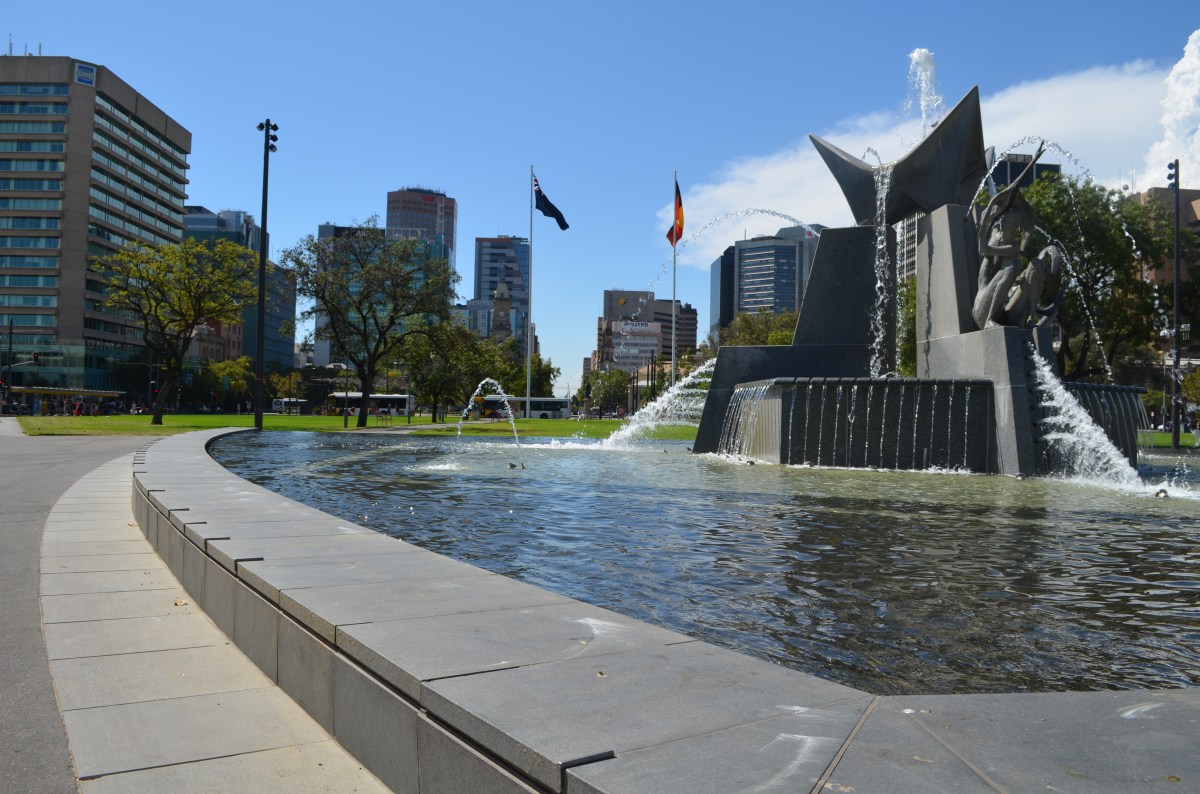
Protruding metal elements, some missing, around the Victoria Square fountain.
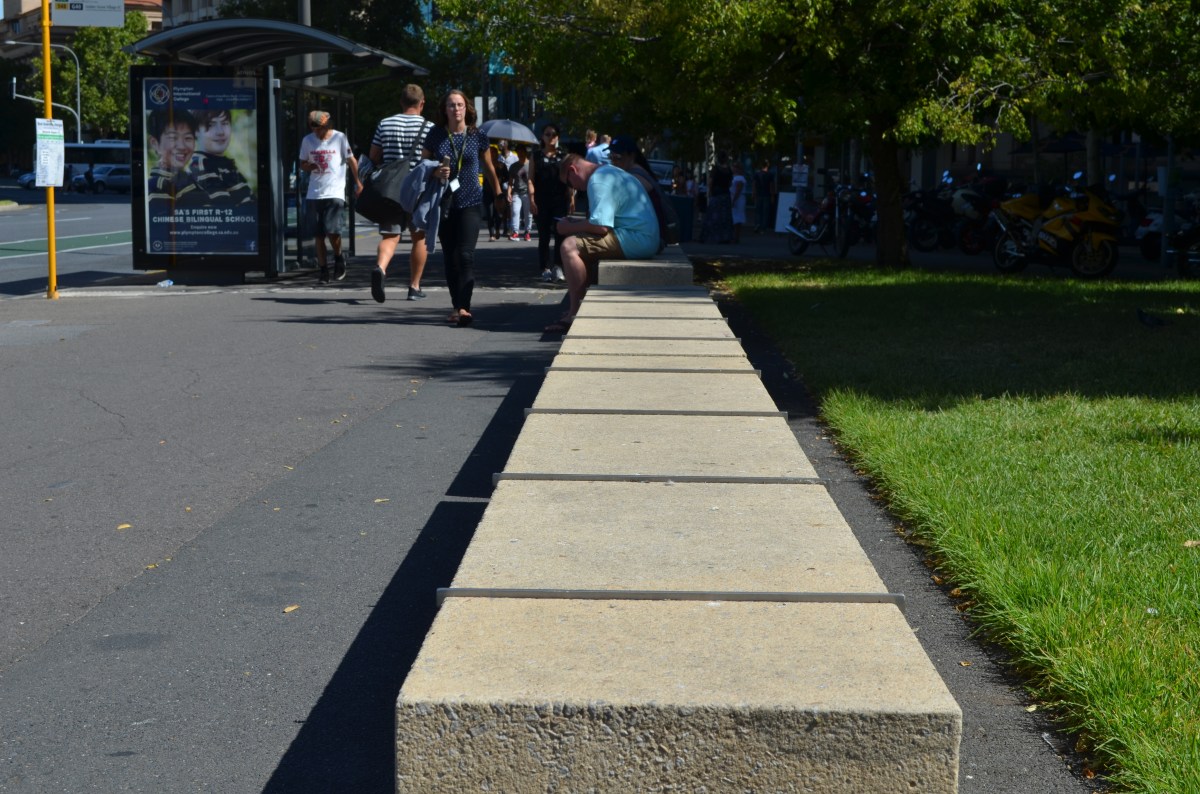
Metal slats on concrete seating in Victoria Square.
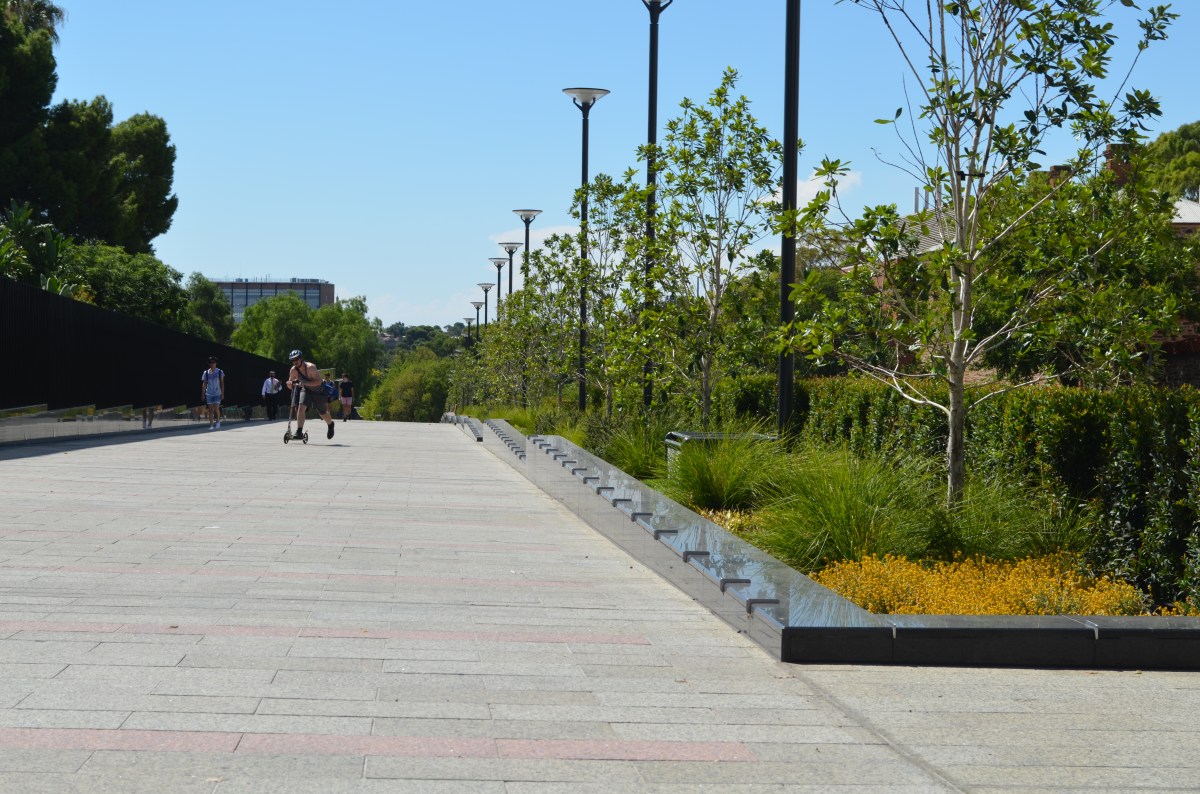
The Anzac Centenary Memorial Walk.
According to Lord Mayor Martin Haese, “our street furniture is not chosen on the basis of discouraging rough sleeping”.
“The metal strips are intended to protect public furniture and landmarks from grinding by skateboarders.
“… we established a temporary skateboard park in Park 15 (Wakefield Road) that is attracting significant use.
“We’re continuing to work with the State Government to establish a permanent, centrally located skateboarding facility.”
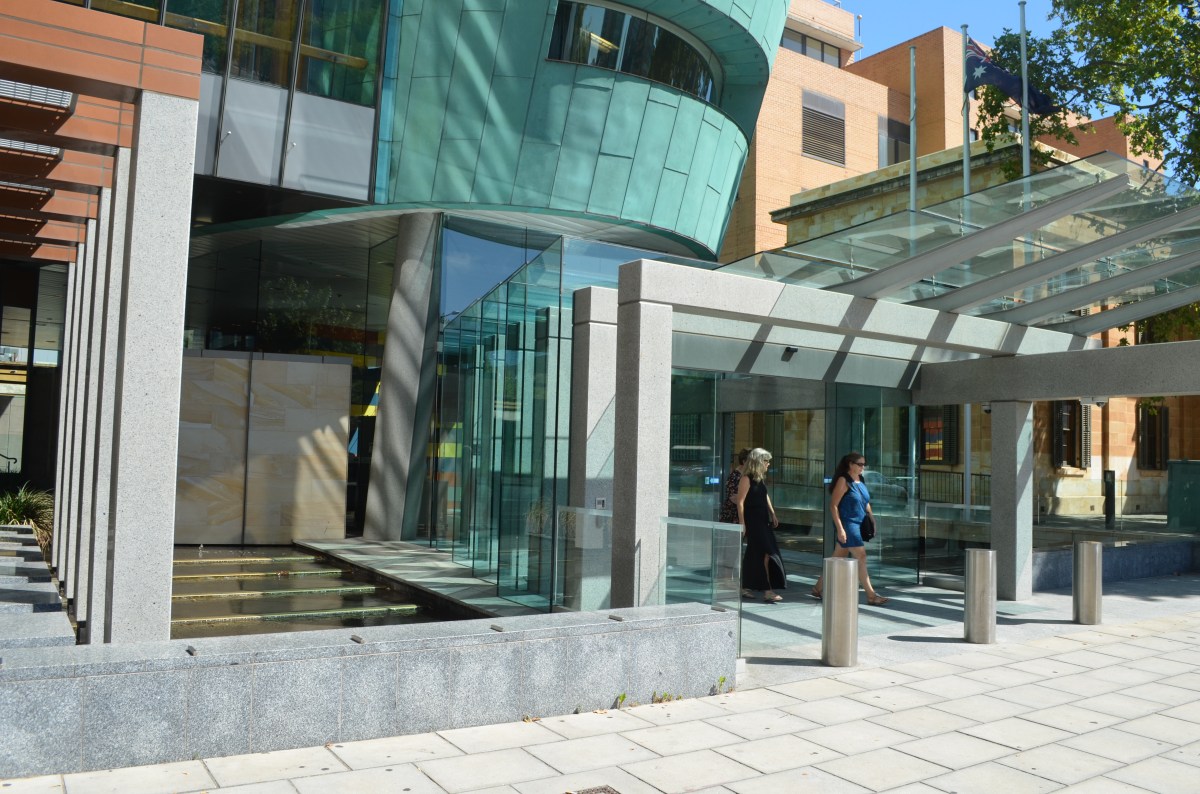
Seating in front of the Roma Mitchell Commonwealth Law Courts building on Angas Street.
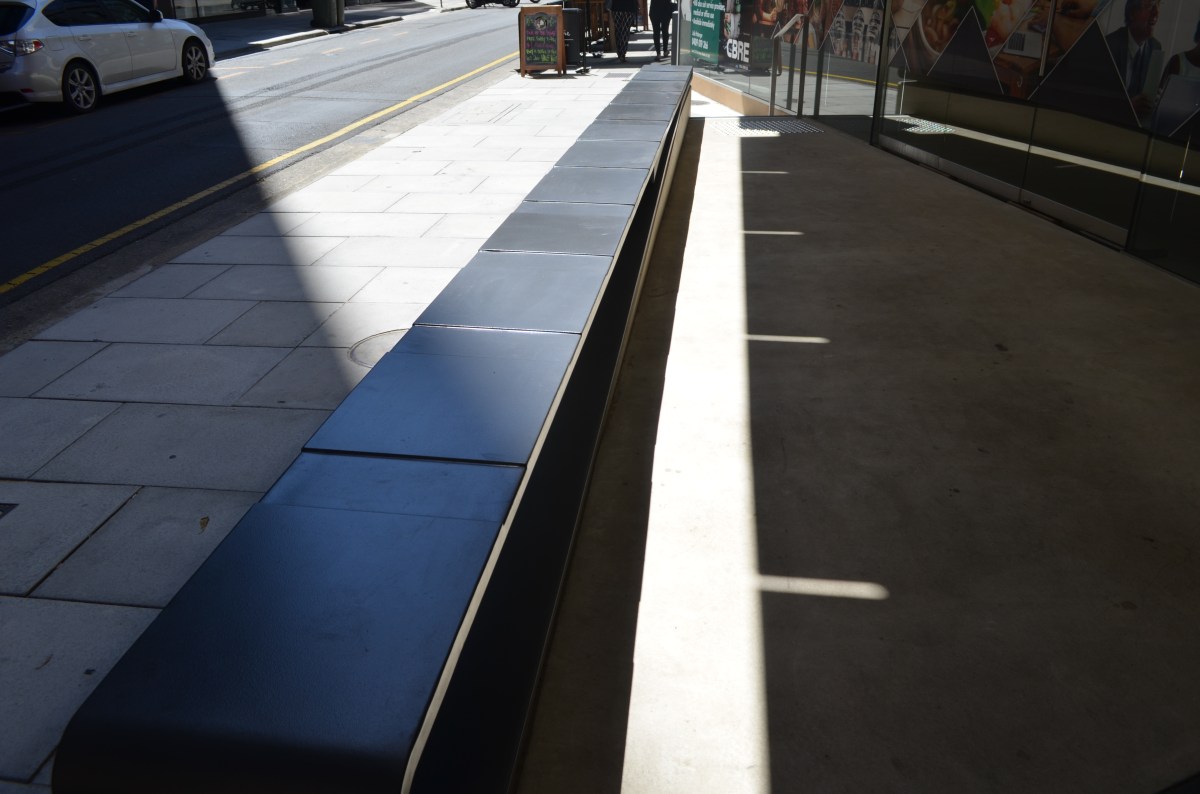
A monument on Gawler Place with an uneven surface.
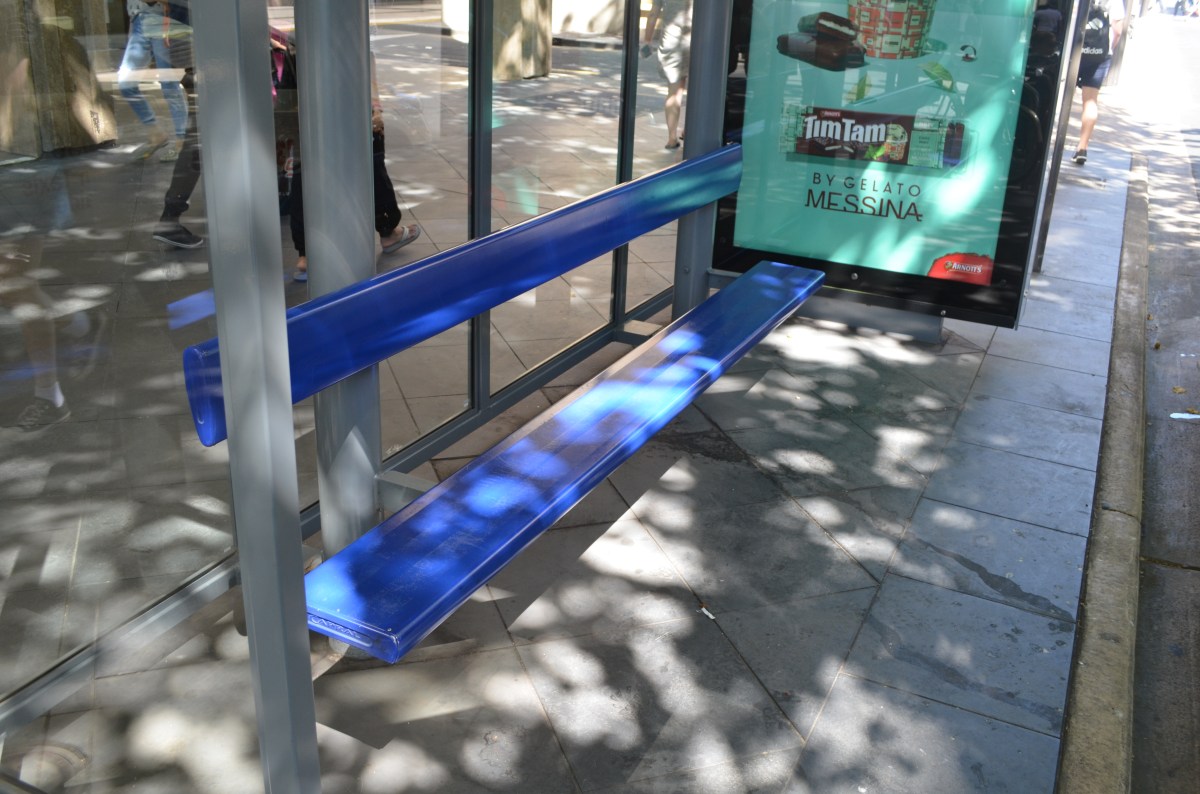
Metal bus stop seats work as seating, but are too thin to lie down on.
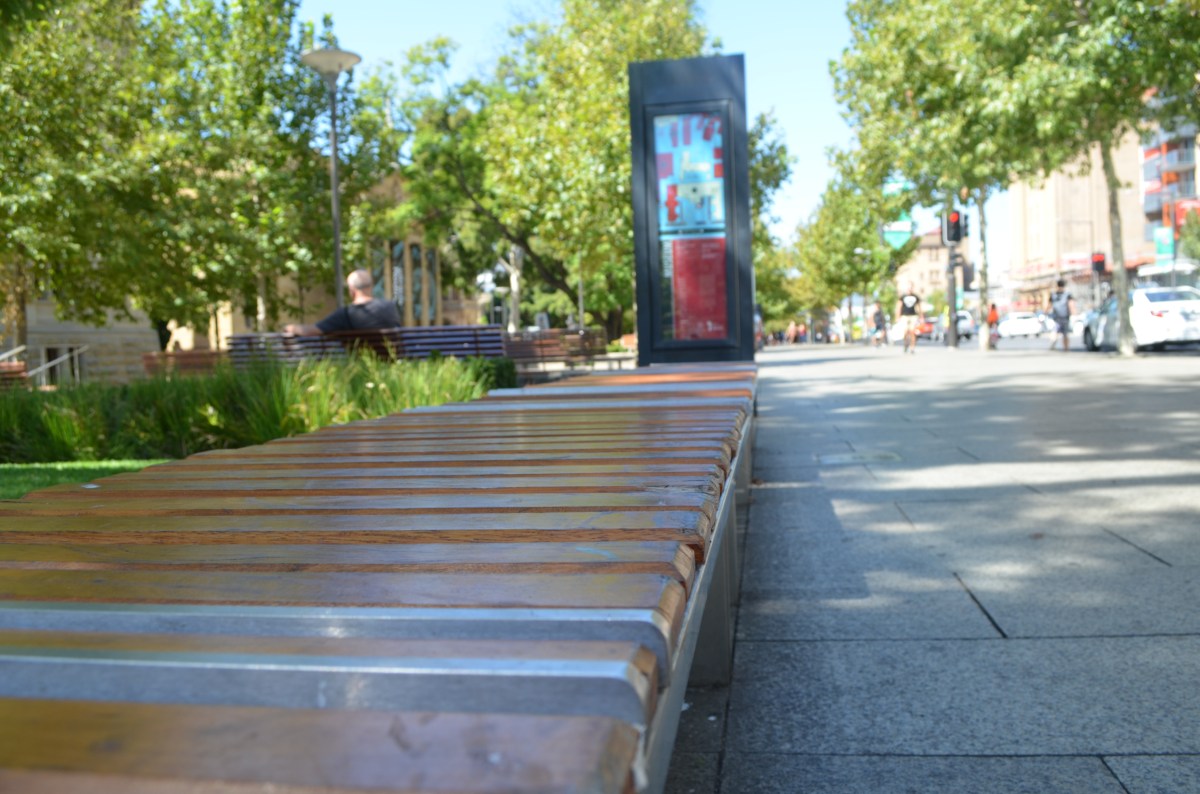
Metal strips protrude from these North Terrace public benches.
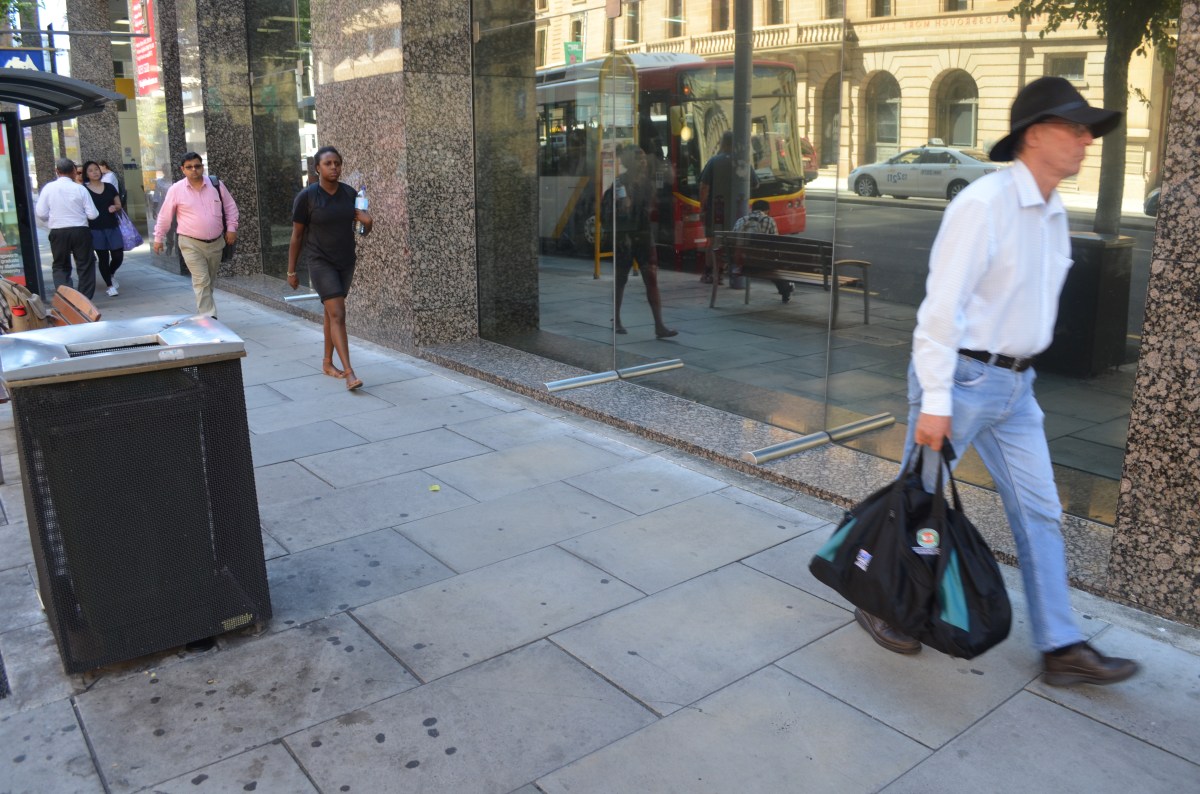
Metal lumps in front of a building on Currie Street prevent damage to the marble – but also prevent homeless people from sleeping there.
AnglicareSA CEO Peter Sandeman says if one of the intentions of design elements installed in public space is to keep people experiencing homelessness out of sight “it’s not a particularly welcoming look” – and it also doesn’t work.
“As the population of people sleeping rough continues to grow, they will be ineffective, because … the inability to use a particular bench isn’t going to be a particular deterrent if that area is seen by people to [as being safe]” he says.
He said homeless people are more likely to sleep on the ground than on public infrastructure, and that the priority for rough sleepers is always finding somewhere to sleep where they feel safe.
He says the number of people sleeping rough in Adelaide’s CBD is rising. In particular, “there are a number of younger people who don’t see themselves as homeless, but are sleeping rough”.




